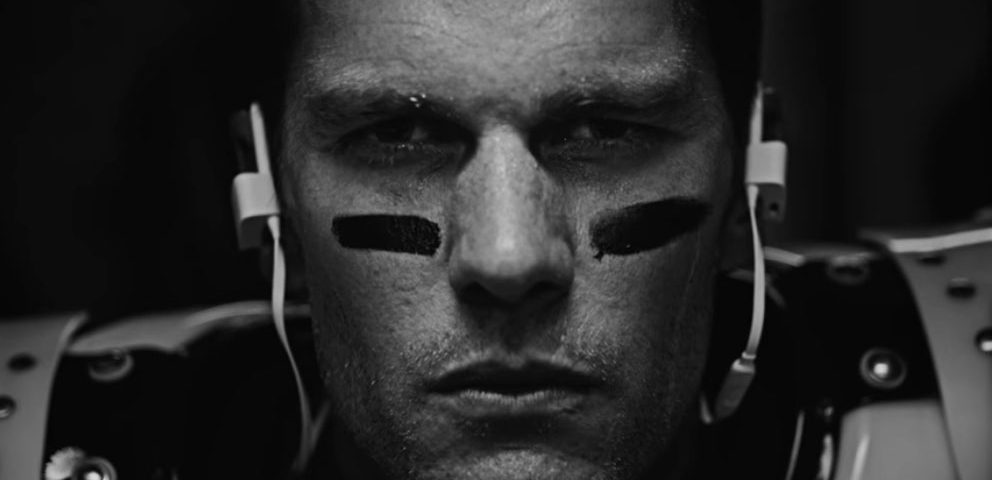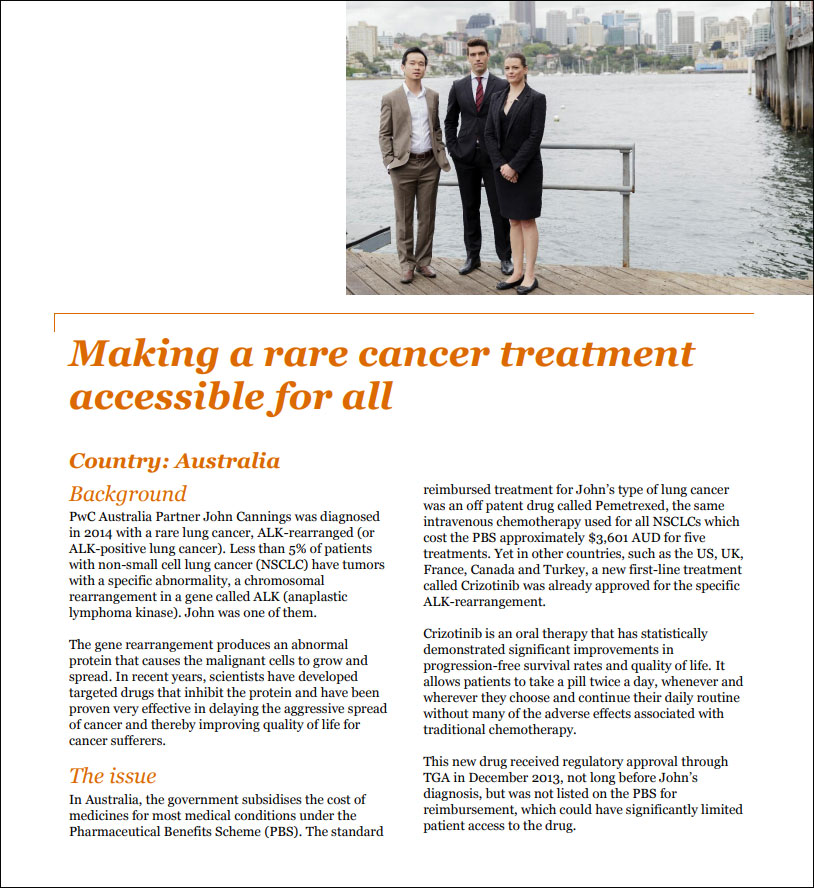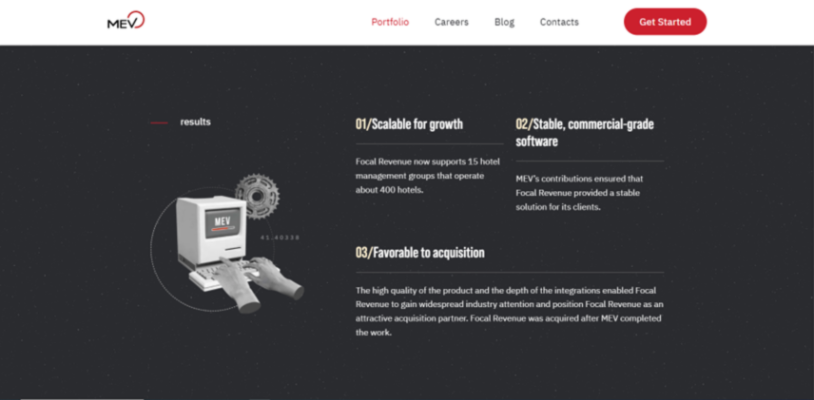5 Examples of Great Case Studies You’ll Want to Emulate

How to Give Life to a Boring Case Study
October 26, 2015
5 Tips for Writing Great B2B Case Studies
June 27, 2018As a case study writer, I know that case studies do more than explain the problem a client faced, how a product or service solved it, and what the results were. They tell a great yarn, as the following five examples of great case studies show.
Case studies that are enjoyable to read use compelling storytelling by painting a clear picture of success with the client’s voice and experience. They offer data to back up any claims and provide eye-catching visuals. And if they cite research besides their own, they get bonus points.
As a case study writer, I offer you five great examples that you could use as templates.
1. Google Case Study
This Google case study tells the story of a last-minute effort by Beats, the headphones and earphones manufacturer, to promote its brand once its brand ambassador, Tom Brady of the New England Patriots, was headed to the Super Bowl.
The case study explains how Beats and its agency PMG capitalized on the Super Bowl through YouTube and social media. Beats didn’t need an expensive TV commercial to have an impact.
Google, by the way, gives its users an option for reading the case study. They can either read it as a web page or download it as a PDF. The two look virtually the same, so I’ll focus on the web page.
What this case study does well:
- Clean layout: Lots of white space; short, readable paragraphs; and good use of graphics.
- Shareable imagery: Since this is the web, Google takes advantage of social media. Graphics, such as a chart and a 21-second video of Tom Brady (awesome copywriting, by the way), can be shared via social media.
- Clever headings: You won’t find the dull challenge/solutions headings here. Instead, the conclusion was “Scrappiness for a win.” Now that’s catchy. Also, the solution was presented as a how to, so it’s instructional and helpful for folks who might want to follow their lead.
- Data: The Google case study focused on brand building, not driving sales. But it used data effectively in call-outs, specifically what social media people use to view Super Bowl ads they missed.
- Client voice: Earl Hwang, PMG’s global brand strategy lead for Beats, is the source for the case study, and he’s a great interview. Every section includes strong quotes that add personality to an already interesting piece.
Quibbles: The video of Tom Brady is no longer available.
2. SimpleReach Case Study
SimpleReach (now Nativo) is a content data platform that Intel, the well-known chip manufacturer, used for its content marketing efforts. The case study (PDF) looks good on the web but could also serve as collateral at a conference.
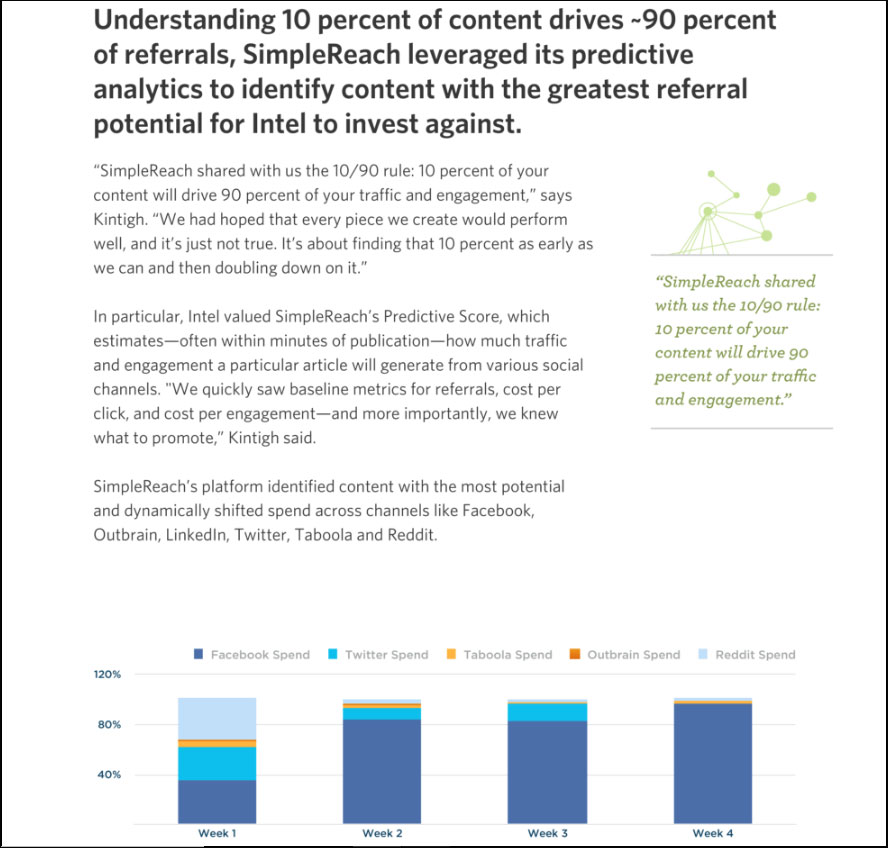
Great case studies, like this one from SimpleReach, show how to use data call-outs and pull quotes effectively.
What this case study does well:
- Professional layout: This is a great-looking color PDF that could be confused with a white paper, it looks so good.
- Different titles: It breaks out the typical challenge/solution/results in a different way. It uses goal and approach for the first two.
- Clear headlines: Headlines summarize what Intel wanted to achieve, how it did so, and what the results were. There’s no guesswork here.
- Use of bold: The case study adds bold to quotes or to call out important information, breaking up the text and making you take notice.
- Classy images, data, pull quotes: Intel provides an image of the product next to a smartphone, so you can understand how the two interact. It also highlights quotes in little sidebars and data in easy-to-follow charts.
- Company bio and contact info: The bio sets the stage for the case study. The audience is probably familiar with Intel, but not with Intel’s content marketing efforts. The last page gives info about SimpleReach and how to reach them.
My only quibble: There is no equivalent bio for SimpleReach. You might walk away thinking this was a case study from Intel.
3. PwC Case Study
PwC (PriceWaterhouseCooper) publishes a lot of case studies. Best known as a firm specializing in audits and tax services, it also works with health services clients.
In this particular case study (PDF), PwC highlights the work it did to help get a cancer drug to market in Australia. A slightly different spin on a case study, it tells the story of one of its own employees who suffered from the same form of cancer that the drug would be able to treat. The employee was instrumental in making the drug reimbursable to a larger population.
What this case study does well:
- Professional layout: A beautiful PDF with a two-column, easy-to-read layout and lots of white space. Perfect for reading online, printing out or using as marketing collateral at conferences.
- Engaging photos: How refreshing to see a photo of the real people in a case study. I also like the headshot of the PwC gentleman who provides the intro.
- Unusual headings: PwC sets the scene with a section called Background. Then it presents the case study with “Issues,” “What did PwC do?” and “What impact did we make?” This is a nice change from the usual challenge/solution/results headings.
- Great pull quote: PwC makes the most of the one quote it has – it’s highlighted in a colored box.
Unlike other case studies, this one doesn’t showcase data, because data isn’t the story. It’s overcoming a regulatory hurdle that matters.
My only quibble: There are two photos of three people, and neither image has a caption. I wanted to know which of these individuals was the PwC employee who had lung cancer.
4. MEV Case Study
MEV is a custom software development firm based in the Bay Area. They asked me to write three case studies for them, and this one, Focal Revenue, is the first one they published.
What this case study does well:
- Professional layout: The case study has lots of breathing room, with ample white (and black) space. The text is short and delivered in easy-to-read chunks. Headings and headlines are brief and to the point.
- Quirky visuals: Overall, MEV has a space theme mixed with older computers and 50s-inspired models (think housewives in aprons and New York ad men in suits). It’s a fun, eye-catching mashup. For the specific case study, MEV uses simple graphics, with dotted lines, circles and arrows, to illustrate more complicated subject matter.
- Data: The most compelling result is that MEV helped a startup develop commercial-grade software, which eventually led to an acquisition. In terms of data, the startup (since acquired) now supports 400 hotels, rather than 50, thanks to stable, scalable software.
- Great quote from the client: The client is quoted twice. The quotes describe MEV’s expertise and the benefits of collaboration.
My only quibble: I don’t have any quibbles, probably because I wrote this case study with design in mind.
5. SunPower Case Study
SunPower manufactures solar panels. In this case study (PDF), it demonstrates how a solar array it installed at Princeton University helped the educational institution conserve energy as part of Princeton’s sustainability plan.
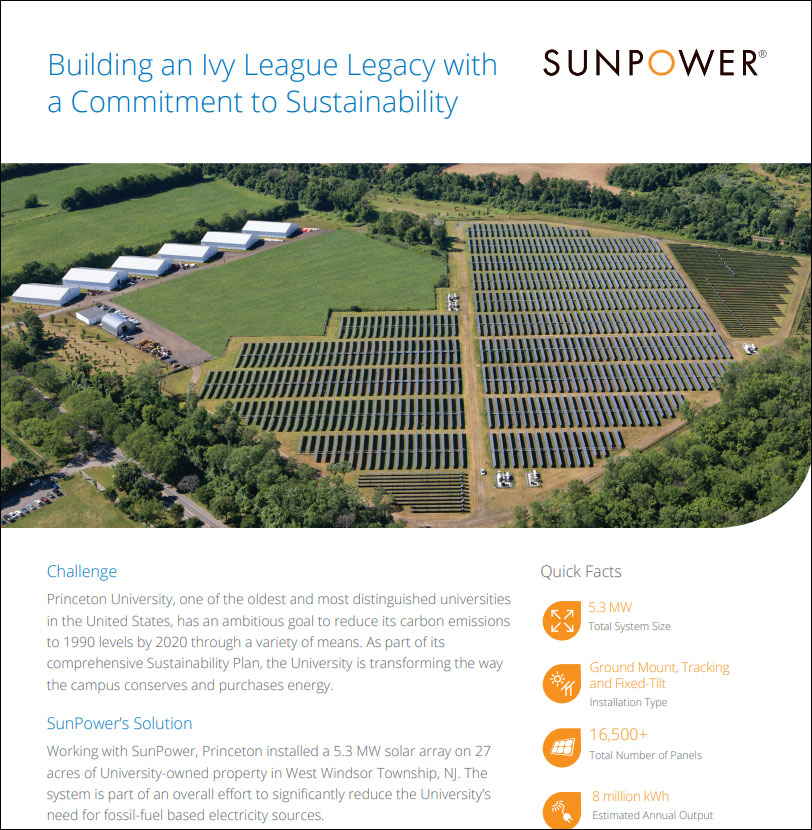
Great case studies make use of large images, strong headlines, and call-outs for data, as this SunPower case study example does.
What this case study does well:
- Clean, appealing layout: The SunPower makes great use of white space, balances the text with images on each page, and pulls out basic data in a sidebar.
- Images on each page: The dominant image on the first page easily fills up half the space. Large solar arrays are impressive to look at, so it makes sense to display a big image here. Every page that follows has an image as well, although not as large.
- Single column for interesting info: SunPower uses this thinner column to highlight quotes from the client as well as quick facts. The rest of the column is left blank, to maximize white space.
- Customer benefit on first page: The case study states in the third paragraph what Princeton has accomplished with the solar array. While the case study is a good read, stating the results up front helps busy people get what they need without having to read the entire case study.
- No humdrum headings: Most headings are quite inspired, such as “21st Century Innovation for an 18th Century Campus” and “Designed for Maximum Power and Minimal Environmental Impact.” It’s clear by these headings what issues Princeton was trying to resolve with solar.
My only quibble: This might be a good case study for SunPower to revisit, since the solar array was installed a few years ago. Updating the numbers could help them revive old content and make it new again.
Do you need a case study writer?
Take a look at my case study portfolio and contact me if you think we’re a good fit.
Note: This blog post first appeared on LinkedIn.

